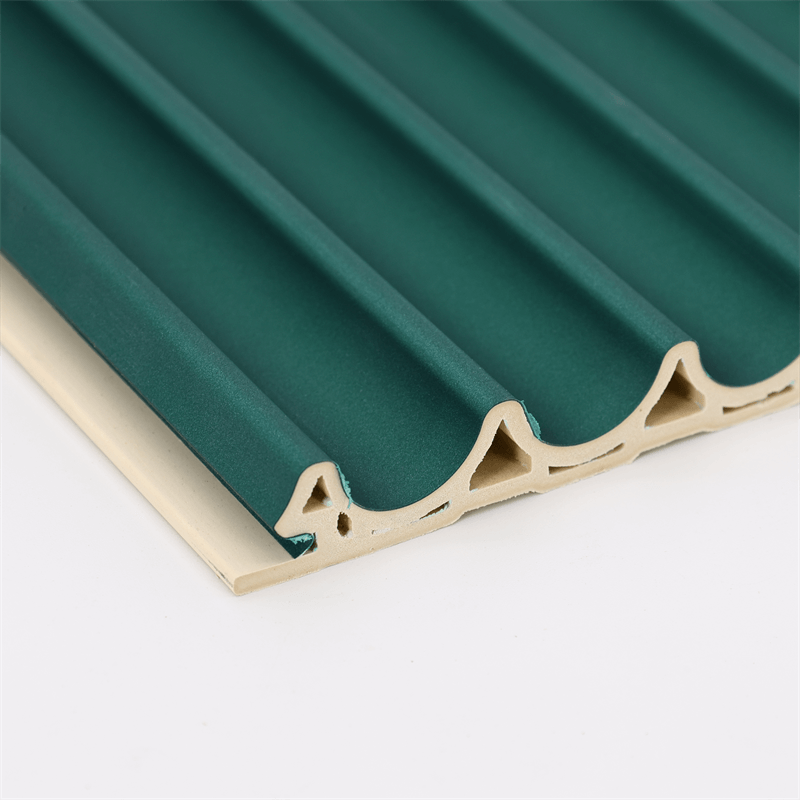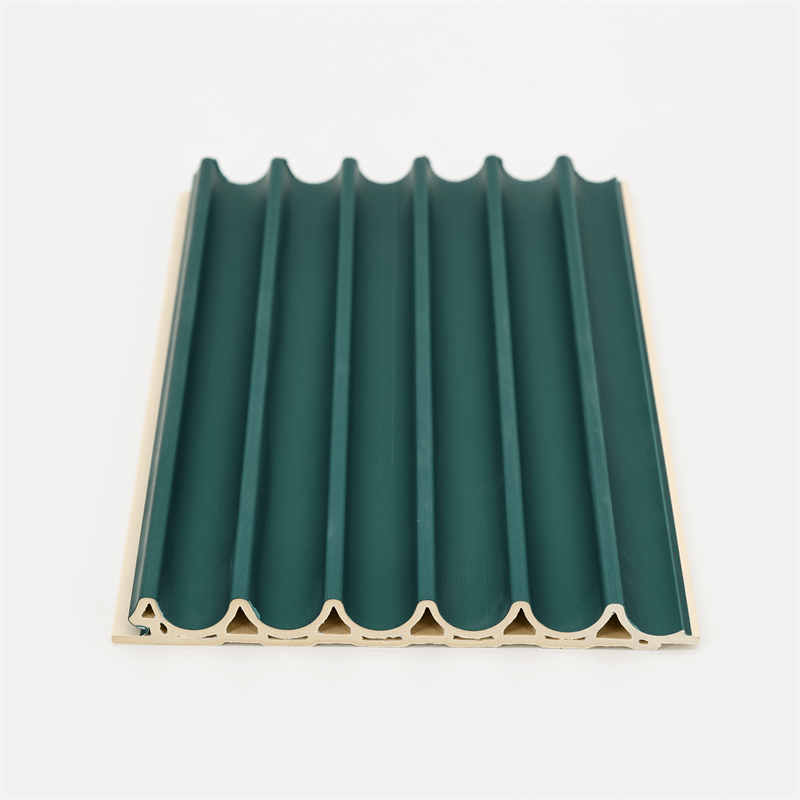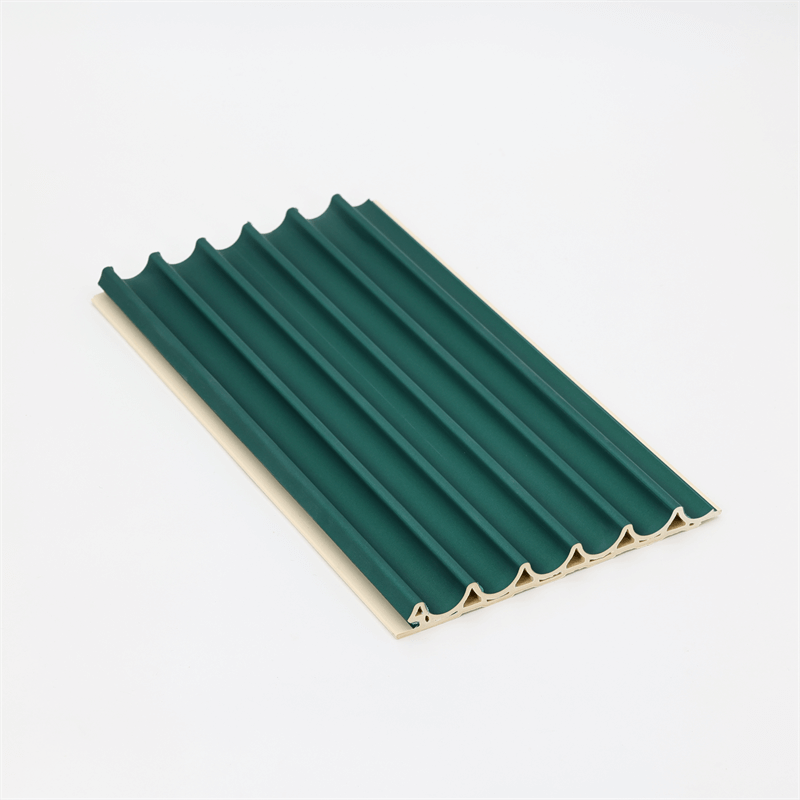Contemporary design is all about innovation, functionality, and aesthetics.
As the architectural and design industries evolve, new materials and technologies are constantly being introduced to meet the demands of modern design.
One such material that has gained significant popularity is WPC (Wood-Plastic Composite) wall panels.
This essay explores the benefits of WPC wall panels in contemporary design, focusing on their versatility, durability, sustainability, and design possibilities.
I. Versatility in Design:
Contemporary design is characterized by its flexibility and adaptability to different spaces and design concepts.
WPC wall panels offer a wide range of design possibilities, making them a preferred choice for architects and designers.
Aesthetics:
WPC wall panels are engineered to mimic the appearance of natural wood, offering a warm and natural aesthetic.
They are available in various colors, textures, and finishes, allowing designers to create unique and visually striking interiors.
Whether aiming for a minimalist, industrial, or organic look, WPC wall panels can be customized to suit different design styles.
Customization:
WPC wall panels can be easily cut and shaped, providing flexibility in design.
They can be used to create intricate patterns, geometric shapes, or feature walls that add depth and visual interest to a space.
The ability to customize WPC panels allows designers to push the boundaries of creativity and create truly unique environments.
II. Durability and Low Maintenance:
Contemporary design emphasizes functionality and practicality, and WPC wall panels excel in these aspects.
Durability:
WPC wall panels are highly durable and resistant to rot, decay, and insect damage.
Unlike traditional wood panels, they do not warp or crack over time, ensuring their longevity and performance.
This durability makes WPC panels suitable for high-traffic areas and commercial spaces where wear and tear are common.
Low Maintenance:
WPC wall panels require minimal maintenance compared to traditional wood panels.
They do not need to be sealed, stained, or painted regularly to maintain their appearance.
Simple cleaning with mild soap and water is usually sufficient to keep them looking fresh and new.
The low maintenance nature of WPC panels saves time, effort, and resources in the long run, making them a practical choice for contemporary design.
III. Sustainability:
Sustainability is a core consideration in contemporary design, and WPC wall panels offer several sustainability benefits.
Responsible Sourcing:
WPC wall panels are made from a combination of wood fibers sourced from sustainable forestry practices and recycled materials.
By utilizing these materials, WPC panels reduce the demand for virgin wood and divert waste from landfills.
This responsible sourcing contributes to the conservation of natural resources and reduces environmental impact.
Recyclability:
WPC wall panels are recyclable and can be repurposed at the end of their life cycle.
They can be recycled into new panels or other plastic products, minimizing waste and promoting a circular economy.
The recyclability of WPC panels aligns with the principles of sustainability, ensuring that they do not contribute to landfill waste.
IV. Design Possibilities:
Contemporary design is driven by innovation and pushing the boundaries of creativity. WPC wall panels offer numerous design possibilities that can elevate the aesthetic appeal of any space.
Texture and Patterns:
WPC panels can be textured to mimic the feel and texture of natural wood, adding depth and visual interest to walls.
Additionally, they can be embossed with patterns or designs, allowing for endless creative possibilities.
These textured and patterned panels can create focal points or accent walls, enhancing the overall aesthetic of a space.
Integration with Technology:
WPC wall panels can be integrated with modern technologies to create smart and interactive environments.
LED lighting systems, digital displays, or sound systems can be seamlessly incorporated into WPC panels, transforming them into functional and visually stunning elements within a space.
WPC wall panels have become a favored choice in contemporary design due to their versatility, durability, sustainability, and design possibilities.
These panels offer architects and designers the freedom to explore innovative concepts and create visually striking interiors.
Their ability to mimic the appearance of wood, coupled with their durability, low maintenance, and sustainable features, make them an ideal choice for both residential and commercial applications.
As contemporary design continues to evolve, the benefits of WPC wall panels will continue to be appreciated.
Their versatility in design, durability, low maintenance, and sustainability align with the core values of contemporary design.
By incorporating WPC wall panels into their projects, architects and designers are not only creating aesthetically pleasing spaces but also contributing to a more sustainable and environmentally friendly built environment.

In conclusion, WPC wall panels have transformed the contemporary design landscape, offering a material that combines functionality, aesthetics, and sustainability.
Their versatility, durability, and low maintenance nature make them an excellent choice for architects and designers seeking innovative solutions.
As the design industry progresses, WPC wall panels will continue to play a significant role in shaping the future of contemporary design, pushing the boundaries of creativity and sustainability.
In conclusion, WPC wall panels have emerged as a game-changer in contemporary design.
Their versatility, durability, low maintenance requirements, and sustainability features make them an ideal choice for architects and designers seeking innovative and responsible solutions.
The ability of WPC wall panels to mimic the natural beauty of wood while offering superior performance and longevity is a key factor in their popularity.
Designers have the freedom to explore various colors, textures, and finishes, allowing for the creation of unique and visually appealing interiors.
The customization options offered by WPC panels open up endless design possibilities, enabling designers to push the boundaries of creativity and create truly remarkable spaces.
Furthermore, the durability and low maintenance nature of WPC wall panels make them well-suited for high-traffic areas and commercial spaces.
Their resistance to rot, decay, and insect damage ensures their longevity and performance, while their low maintenance requirements save time, effort, and resources in the long run.
From a sustainability perspective, WPC wall panels contribute to responsible sourcing and waste reduction.
By utilizing wood fibers from sustainable forestry practices and incorporating recycled materials, these panels help conserve natural resources and divert waste from landfills.
Their recyclability further supports the principles of a circular economy, ensuring a more sustainable approach to construction and design.
As contemporary design continues to evolve and embrace sustainability as a core value, the benefits of WPC wall panels will continue to be recognized and sought after.
These panels have proven to be an innovative and eco-friendly solution that aligns with the principles of modern design.
In conclusion, WPC wall panels have revolutionized contemporary design with their versatility, durability, low maintenance requirements, and sustainability benefits.
As architects and designers embrace these panels, they are creating spaces that are not only visually striking but also environmentally responsible.
The rise of WPC wall panels signifies a shift towards a more sustainable and conscious approach to design, shaping the future of contemporary architecture in a positive way.


